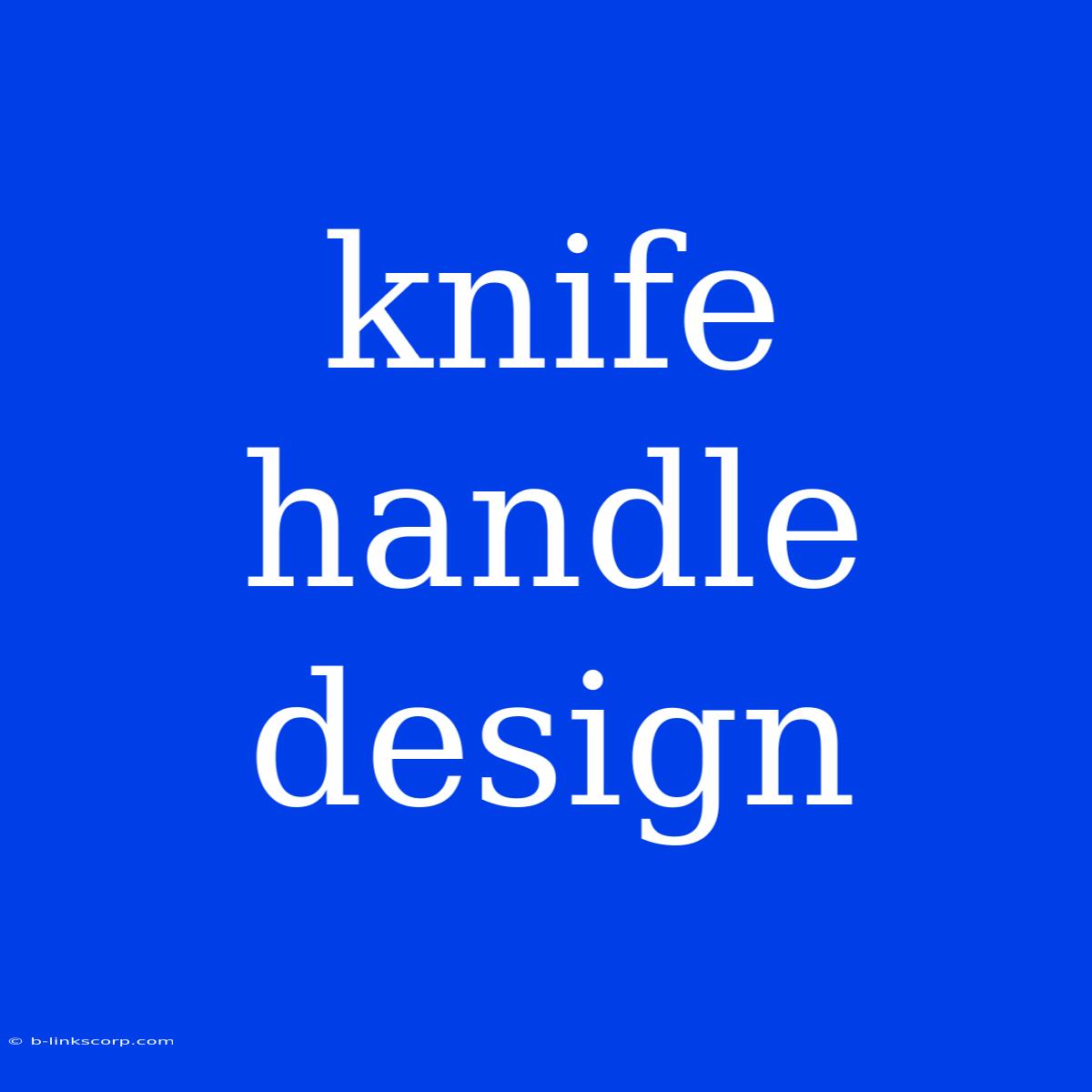The Art of Knife Handle Design: Functionality Meets Aesthetics
A knife handle isn't just a grip; it's the bridge between the user and the blade, an extension of the hand that allows for precision, control, and power. The design of a knife handle plays a crucial role in its overall performance, comfort, and even aesthetics. Let's delve into the intricate world of knife handle design.
The Anatomy of a Knife Handle:
Before we dive into the specifics, understanding the components of a handle is essential. Most knife handles consist of these key elements:
- Tang: The metal portion of the blade that extends into the handle. It provides structural integrity and anchors the blade.
- Scales: The outer layers of the handle, typically made from wood, plastic, metal, or other materials. They provide the grip and aesthetic appeal.
- Bolsters: Metal plates that reinforce the handle at the top and bottom, often featuring decorative elements.
- Pins: Small metal rods that secure the scales to the tang.
- Guard: A metal piece separating the handle from the blade, offering protection from accidental cuts.
Functionality First: Considerations for Grip and Control:
- Shape and Contour: The shape of the handle is paramount. Ergonomic designs, with curves and contours that conform to the natural shape of the hand, provide a secure grip and minimize fatigue during extended use.
- Material Choice: The material selected significantly impacts the grip.
- Wood: Natural and aesthetically pleasing, wood offers a warm feel and excellent grip, but can be susceptible to moisture.
- Plastic: Durable, lightweight, and often available in various colors, plastic is cost-effective but can feel cold and less comfortable than wood.
- Metal: Strong and resilient, metal handles offer excellent durability, but can be heavy and cold.
- G10 and Micarta: Engineered materials that combine strength, durability, and water resistance, making them excellent for high-performance knives.
- Texturing and Inlays: Texturing, whether it's fine grooves or aggressive patterns, enhances grip, especially in wet or slippery conditions. Inlays of different materials can add visual appeal and enhance the handle's grip.
Beyond Functionality: The Aesthetics of Design
While functionality is paramount, a well-designed knife handle can be a work of art.
- Material Selection: Different materials offer unique aesthetics. The grain pattern of wood, the metallic sheen of steel, the vibrant hues of plastics - each brings its own visual appeal.
- Color and Finish: From natural wood tones to vibrant colors, the finish of a handle can enhance its aesthetic appeal. Polished metal offers a sleek look, while a distressed finish creates a rugged feel.
- Design Elements: Intricate carvings, inlaid materials, and decorative bolsters can transform a handle into a unique piece of craftsmanship.
The Evolution of Knife Handle Design:
Throughout history, knife handle designs have evolved, driven by advancements in materials, manufacturing techniques, and user preferences.
- Traditional Designs: Classic patterns, like the "D-shaped" handle or the "full tang" construction, have been tested and refined over centuries, offering enduring functionality.
- Modern Innovations: New materials like G10 and Micarta, combined with advanced machining techniques, have led to innovative designs that push the boundaries of strength, durability, and aesthetics.
Choosing the Right Handle for You:
Ultimately, the "best" knife handle design is subjective. It depends on the intended use, your personal preferences, and your budget. Whether you're seeking a functional tool for everyday tasks, a high-performance knife for outdoor adventures, or a beautifully crafted piece for display, there's a handle design out there that's perfect for you.
Remember:
- Function trumps aesthetics. A poorly designed handle, however beautiful, will be a frustration to use.
- Consider your needs. Do you need a durable handle for heavy use? Do you prefer a comfortable grip for extended tasks?
- Experiment! Try out different handles, materials, and designs to find what works best for you.

